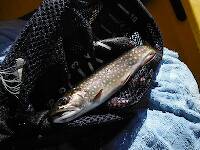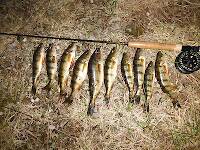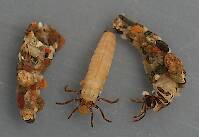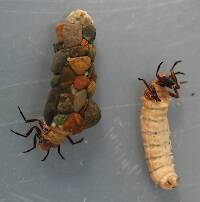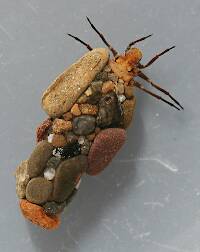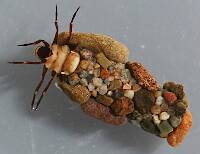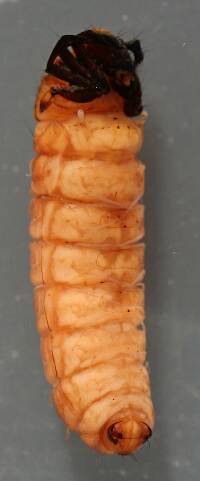
Salmonflies
Pteronarcys californica
The giant Salmonflies of the Western mountains are legendary for their proclivity to elicit consistent dry-fly action and ferocious strikes.
Featured on the forum

This wild-looking little thing completely puzzled me. At first I was thinking beetle or month larva, until I got a look at the pictures on the computer screen. I made a couple of incorrect guesses before entomologist Greg Courtney pointed me in the right direction with Psychodidae. He suggested a possible genus of Thornburghiella, but could not rule out some other members of the tribe Pericomini.

Troutnut is a project started in 2003 by salmonid ecologist Jason "Troutnut" Neuswanger to help anglers and
fly tyers unabashedly embrace the entomological side of the sport. Learn more about Troutnut or
support the project for an enhanced experience here.
PaulRoberts on Mar 7, 2013March 7th, 2013, 7:24 am EST
I was going to say Neophylax as well. When did you take the photo? I thought they were summer aestivators and fall emergers.
I was thinking this would be another good project for a mathematician trying to discern emergent properties in complex systems.
Each specimen optimizing flow velocity creating a group pattern that tracks the laminar flow like smoke in a wind tunnel?
I was thinking this would be another good project for a mathematician trying to discern emergent properties in complex systems.
Crepuscular on Mar 7, 2013March 7th, 2013, 8:37 am EST
I was going to say Neophylax as well. When did you take the photo? I thought they were summer aestivators and fall emergers.
The specimens were collected, photographed and identified on Tuesday March 5, 2013. Same day as the photo of the rock was taken. I do not have the species key for Neophylax so I can't tell you what actual species we have there.
Creno on Mar 7, 2013March 7th, 2013, 12:59 pm EST
Neophylax ornatus is a widespread common eastern species which emerges in a couple months rather than in the fall like most Neophylax. But there could be other species that emerge early as what is known about life history for most of the species is based on very few records/studies.
Quick Reply
Related Discussions
Topic
Replies
Last Reply
7
Nov 20, 2006
by GONZO
by GONZO
14
May 5, 2016
by Martinlf
by Martinlf
1
Apr 10, 2008
by Wbranch
by Wbranch
4
Jun 16, 2011
by Troutnut
by Troutnut
8
Jun 5, 2007
by Dinerobyn
by Dinerobyn
2
Feb 6, 2017
by Crepuscular
by Crepuscular




